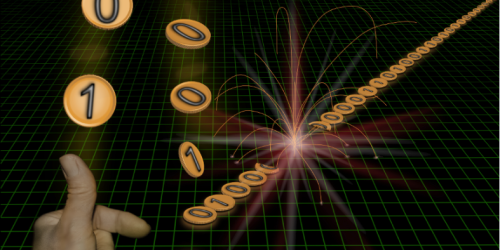Coin Flip Decides Material’s Fate
Materials typically contain lots of small imperfections, but it’s the rare, large defects that cause a material to fail. A new study looks at failure in stretched fibers, finding that the force needed to break a fiber decreases as the fiber’s length increases. The exact relationship mirrors the St. Petersburg paradox—a famous mathematical problem dealing with coin tosses.
First considered by the Swiss mathematician Nicolaus Bernoulli in 1713, the St. Petersburg paradox concerns a betting game in which a player flips a coin until a heads appears. One flip wins $2, two flips wins $4, n flips wins $ 2n. It seems like a good game to bet on, as, mathematically, the average payout is infinite. The paradox is that the winnings are typically small. The reason can be understood by calculating how likely it is that a big payout (a long streak without heads) occurs in N flips. This probability scales logarithmically with N—meaning you have to play a lot to win big.
A similar game may happen inside materials, say Jake Fontana from the US Naval Research Laboratory and Peter Palffy-Muhoray from Kent State University, Ohio. They applied loads to nylon fibers of various lengths from 1 mm to 1 km. The shortest fibers resisted the largest loads, with the strength decreasing logarithmically as the fibers got longer. This behavior is described by a model in which a “coin toss” decides whether a segment of fiber hosts an imperfection or not. A large defect—corresponding to a “streak” of imperfections in adjacent segments—is more likely in long fibers than short.
This research is published in Physical Review Letters.
–Michael Schirber
Michael Schirber is a Corresponding Editor for Physics Magazine based in Lyon, France.




